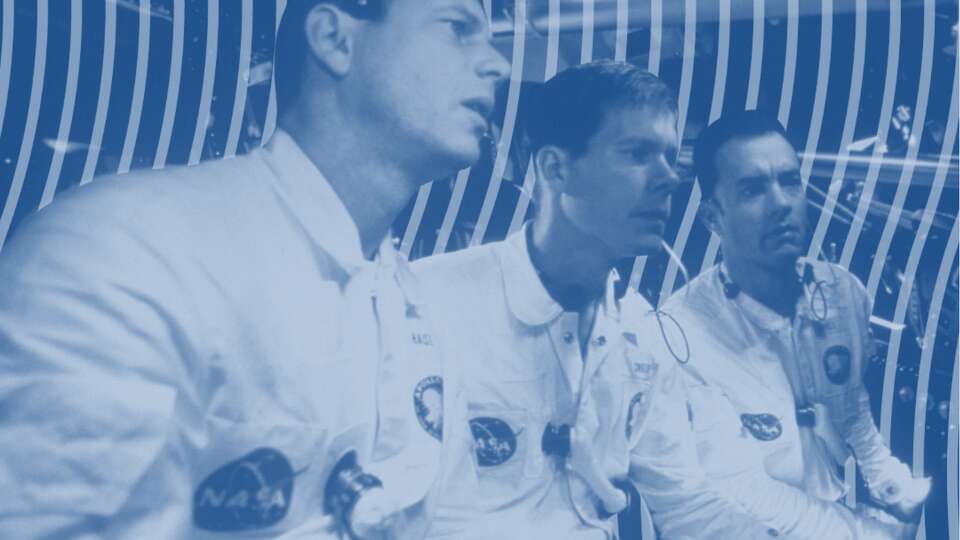June 18, 2024

The problem with 'Houston, we have a problem'
You've probably heard this one before.
There's a Wikipedia page dedicated to it. Song lyrics, too. More memes based on the phrase than there are stars in the sky. Sports broadcasters, particularly, have a thing for it when a Houston team fares poorly.
The origins of "Houston, we have a problem" rest with the nearly catastrophic Apollo 13 mission in 1970. For decades since, the phrase has been used to signify a downturn for all manner of misfortune: financial, medical, political, sports-y, and romantic.
The phrase isn't even an accurate quote
Following the rupture of an oxygen tank, astronaut Jim Lovell said to Mission Control back home, "Houston, we've had a problem."
Lovell's response was an epic understatement. The explosion affected the spacecraft's supply of electricity and water. Lovell, Fred Haise and Jack Swigert were 200,000 miles from home. Not only was their planned Moon landing nixed, but their colleagues back on Earth had to brainstorm a way to get them home alive.
Their plan was a mix of math and desperation.
It involved moving the three astronauts from the command module, or CM, to the lunar module, LM, which was designed to support a crew of two for two days. The three rationed water, conserved power and survived in the LM for four days, which bought them time to use the Moon's gravity to fling the craft back toward Earth. A nudge from the LM's engine got the three to where they could return to the CM for reentry.
Lovell put the crew's chance of survival under 10%. All three survived, and two are still alive today.
That mission, while technically a failure, has become a core piece of NASA lore as a story of resilience and teamwork.
So why do we remember it incorrectly?
That has to do with Ron Howard's 1995 feature film "Apollo 13," which was co-written by Houston native Bill Broyles. Even the poster for the film carries the line spoken by actor Tom Hanks, who played Lovell: "Houston, we have a problem."
The case of the missing "had" leads directly to Broyles.
"We knew the transcripts intimately," he says. "We knew exactly what was said. But 'we've had' indicates the problem is over. For dramatic reasons, we had to pull the viewer into what the situation is. . . . If you 'have' a problem, it becomes the problem of everybody watching the film. If you've 'had' a problem, congratulations. Tell us how you fixed it.
"It's a little artistic license."
Artistic license that, in a sense, rewrote history.
"Apollo 13" was, by any measure, a success: nine Academy Award nominations with two wins; $350 million at the box office (more than $700 million adjusted). The film introduced one generation's iconic cultural moment to another generation. The phrase flowered into cultural ubiquity, a Third Coast catchphrase that came to represent any plan that went awry.
What do the people who were actually in the room think?
Eugene Kranz, played by actor Ed Harris in Howard's "Apollo 13," was part of the team on Earth that brought the three astronauts home. While astronauts typically played the part of NASA rock stars, Kranz has become perhaps the most identifiable flight controller over the years.
" 'Have a problem,' 'have had a problem,' it almost doesn't matter because it's still in such wide use," Kranz says. "Sayings come into the American vernacular, and you don't control how they get used.
"But here we are, 30 years after that movie, still talking about it."
 | Andrew Dansby |
Ask Us Anything
What stumps you about Houston? Reply directly to this email with your questions.
Your questions, explained
Reader Question: Why do the night herons live in Boulevard Oaks? — Brooke Bailey
While it's tempting to say the yellow-crowned night herons are drawn to the historic homes that line North and South Boulevards in Boulevard Oaks, their presence on these scenic blocks has more to do with another kind of shelter. Dan Brooks, curator of vertebrate zoology at the Houston Museum of Natural Science, points to live-oak-saturated sidewalks. Those "old, strong" trees are solid supports for roosting and supporting.
He also says Boulevard Oak is home to a heron-approved menu of frogs, anoles and large insects.
When its neck is retracted, the yellow-crowned night heron earns a few descriptors we might find unflattering: stout, stocky, thick. When stretched out, the bird is almost S-shaped. The adult has a playful, black bandit mask, with a torso on the blue-ish side of gray and wings that look almost marbled. A wispy shock of yellow plumage atop the head gives the bird its name and a punk rock vibe sharpened by a sturdy, dagger-like beak.
While these herons are easy to find along the few blocks of Boulevard Oaks, I've also seen them in trees a few blocks to the west, as well as further north on the other side of the Southwest Freeway, milling about near Rockin' Robin Guitars. They also find the trees and menu agreeable on the Rice University campus.
Unsubscribe | Manage Preferences

Houston Chronicle
4747 Southwest Freeway, Houston, TX 77027
© 2024 Hearst Communications


No comments:
Post a Comment